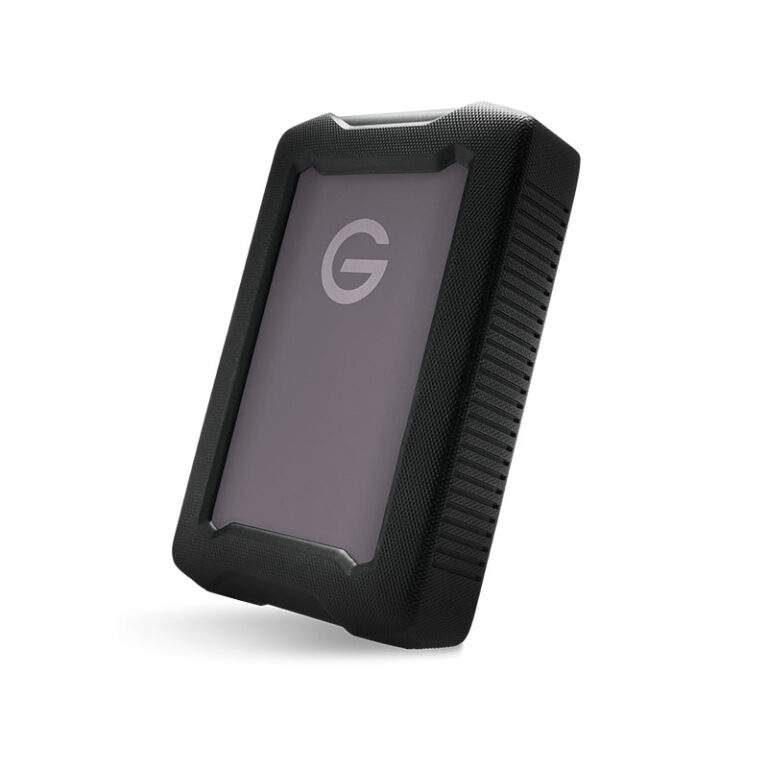When working with large digital files, whether you’re a video editor, photographer or DIT, having a reliable, high-speed external SSD that does not throttle or overheat is essential.
Choosing the right one depends on several factors, including durability, interface type, storage capacity and transfer speed (performance).
This honest guide will break down what to look for when choosing a portable SSD to suit your workflow.
 Portable SSDs Transfer Speed
Portable SSDs Transfer Speed
Transfer speed is critical for reducing wait times when moving large files. Factors affecting speed include:
- SSD Type – NVMe SSDs are significantly faster than SATA-based SSDs, with read/write speeds often exceeding 2000MB/s.
- Interface – A Thunderbolt or USB 3.2 Gen 2×2 connection maximizes performance.
- Internal Components – Higher-end SSDs use better NAND flash and controllers, improving sustained speeds and reliability.
Choosing the Right Speed for Your Workflow
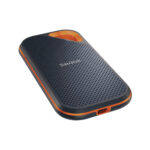 Different SSDs offer varying speeds, and choosing the right one depends on your use case:
Different SSDs offer varying speeds, and choosing the right one depends on your use case:
- Up to 1000MB/s – Suitable for photographers and general media professionals who need fast but not extreme speeds.
- Up to 2000MB/s – Recommended for video editors working with 4K footage or handling large batch file transfers.
- Up to 2800MB/s – Ideal for high-end video production, 8K editing, and professionals who require the fastest possible workflow.
For those working with high-resolution video, choosing an SSD with speeds above 2000MB/s ensures smooth playback, fast rendering, and efficient data transfers.
Interface Types | Understanding Connectivity
 The connection type of your SSD impacts both speed and compatibility. Here’s a breakdown of the most common interfaces:
The connection type of your SSD impacts both speed and compatibility. Here’s a breakdown of the most common interfaces:
- USB-C (USB 3.2 Gen 2) – Offers speeds up to 10Gbps, suitable for most general-purpose media work. These SSD’s provide real world transfer speeds of up to 1000MB/s.
- USB-C (USB 3.2 Gen 2×2) – Doubles the bandwidth of Gen 2, reaching 20Gbps, but requires compatible hardware (i.e. your computer must support this connection). Provides real world transfer speeds of up to 2000MB/s. So if you don’t have a new PC with USB 3.2 (Gen 2×2) or do have an Apple MAC with Thunderbolt, don’t waste your money on this product as it will only provide speeds up to 1000MB/s.
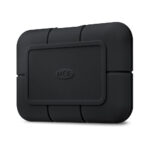 Thunderbolt 3/4 – Ideal for handling high-resolution video files and large data transfers. However, it is only compatible with Thunderbolt-enabled devices. Real world transfer speeds of up to 2800MB/s.
Thunderbolt 3/4 – Ideal for handling high-resolution video files and large data transfers. However, it is only compatible with Thunderbolt-enabled devices. Real world transfer speeds of up to 2800MB/s.
** When using 2 or more units, you will need a mains powered hub (e.g. Caldigit TS4) to keep the juices flowing! i.e. prevent the MAC from having power cycle issues. **
- USB 4 – The latest standard, supporting up to 40Gbps, with broader compatibility. As with the thunderbolt SSD’s, when using 2 of these devices on one laptop, a powered Thunderbolt hub is recommended. Real world transfer speeds up to 2800MB/s.
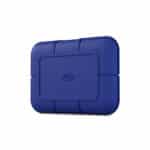 Thunderbolt 5 – read/write speeds of up to 6,700/5,300MB/s! As this is a brand new product, feedback TBC!
Thunderbolt 5 – read/write speeds of up to 6,700/5,300MB/s! As this is a brand new product, feedback TBC!
Storage Size | Balancing Capacity and Budget
Choosing the right capacity Solid State Drive depends on your workflow and storage needs:
- 1TB – Suitable for photographers handling RAW images and light video work.
- 2TB – 4TB – Recommended for video editors and digital artists managing large media files.
- 8TB – Best for professionals handling high-resolution video projects, such as 4K/8K footage.
Consider how much footage you shoot regularly and whether you need to offload files frequently or keep projects stored long-term.
Durability | Built to Last
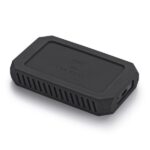 Professionals who frequently travel or work on set need an SSD that can withstand rough conditions. Unlike traditional hard drives, SSDs have no moving parts, making them more resistant to shocks and vibrations. When choosing an SSD, consider:
Professionals who frequently travel or work on set need an SSD that can withstand rough conditions. Unlike traditional hard drives, SSDs have no moving parts, making them more resistant to shocks and vibrations. When choosing an SSD, consider:
- Shock and Drop Resistance: Look for models rated for drop protection, often advertised as MIL-STD-810G certified.
- Water and Dust Resistance: Some SSDs come with an IP rating (e.g. IP67), making them resistant to dust and water.
- Build Quality: A rugged, reinforced casing can prevent physical damage.
Finding the Best SSD for Your Needs
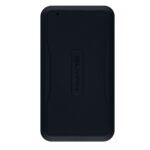 Investing in a high-quality SSD not only improves efficiency but also ensures the safety and longevity of your media files. Choose wisely based on your specific requirements, and your external SSD will become an invaluable part of your creative toolkit.
Investing in a high-quality SSD not only improves efficiency but also ensures the safety and longevity of your media files. Choose wisely based on your specific requirements, and your external SSD will become an invaluable part of your creative toolkit.
Knowing production as we do, we have a good feel of what works and what doesn’t and realistic transfer speeds in professional environments. We only stock brands that we know consistently perform. If you are unsure, talk to us or visit our Sold State Drives section.



